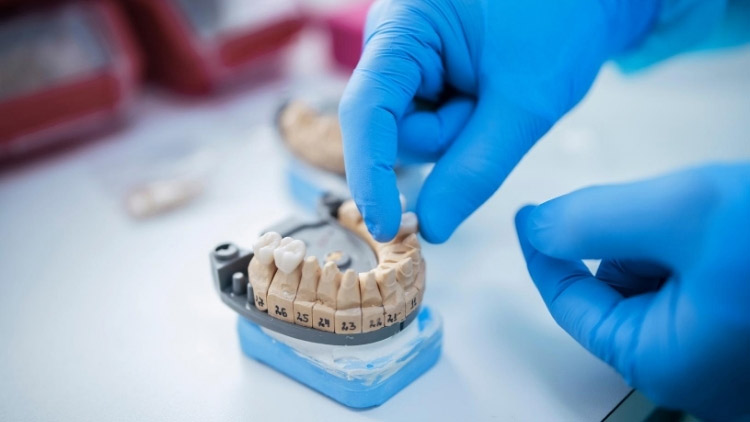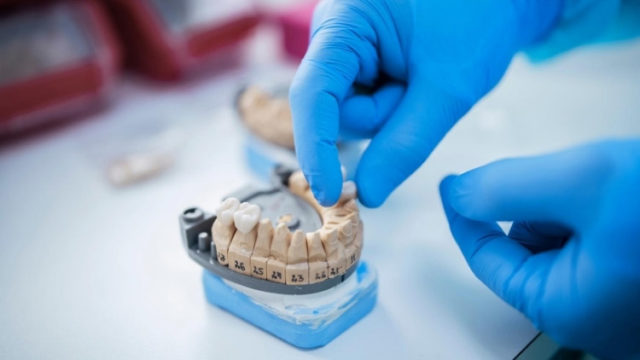
In the event that you have a damaged tooth, a dentist may use a crown or bridge to strengthen the tooth as well as improve its appearance, alignment, shape and your overall bite. Before we look at each procedure, it’s important to note the differences between the two devices. A crown covers or “caps” a damaged implant or tooth while a bridge is used if you’re missing a tooth or teeth.
Crowns
There are several reasons your dentist may recommend a crown. A dental crown may be used to:
- Cover a dental implant
- Cover a discolored or misshaped tooth
- Protect a weak tooth
- Repair a broken tooth
- Replace a large filling if there’s not a lot of tooth left
As far as the procedure goes, an impression of your tooth is taken by your dentist who then may place a temporary crown onto your tooth until the permanent one is created. The crown is cemented on top of the dental implant or tooth requiring no surgery.
Types of Crowns
If your dentist recommends a crown, you have four different types to choose from.
Ceramic: Mostly used on front teeth, ceramic crowns are best at blending in with your natural tooth color. They are highly resistant to wear but are less durable than the gold and metal alloy crowns.
Porcelain-Fused to Metal: Extremely durable and provides a stronger bond than regular porcelain because it’s fixed to metal.
Gold Alloy: A mix of gold, copper and other various metals, gold alloys have a strong bond to your natural tooth or implant and doesn’t fracture or wear away.
Base Metal Alloy: Made up of non-noble metals, base metal alloys require the least amount of tooth to be removed to fit and are very strong.
Bridges
Your dentist may insert a bridge if you’re missing one or more teeth. Bridges help to:
- Fill in gaps and restore smiles
- Prevent other teeth from shifting
- Restore your ability to chew and speak properly
For a bridge procedure, dentists cement the device to natural teeth or implants surrounding the empty space. Like a crown, this procedure is very non-invasive.
Types of Bridges
Bridges also come in four different types.
Traditional Bridges: The most popular kind of bridge is made of ceramic or porcelain-fused to metal and is used when your natural teeth surround a missing tooth or gap on both sides. One or more fake teeth are held in place by two abutment teeth, natural teeth given crowns to support fake teeth.
Cantilever Bridges: These bridges are also attached to an abutment tooth, but only on one side. Because they are only attached on one side, these have a higher chance of complications.
Maryland Bridges: Not as durable as traditional bridges, Maryland bridges are often used in the front of the mouth. They use metal or porcelain bands to bond a fake tooth to the backs of adjacent natural teeth. There are no crowns required but are only as strong as the bonding agent used.
Implant- Supported Bridges: Very similar to traditional bridges, implant-supported bridges are supported by the teeth surrounding the gap, but instead of them being natural teeth, they are implants.
Crown and bridge procedures are becoming more and more common and are easy to complete. Unlike a dental implant procedure that requires surgery and ample recovery time, these restorative devices are a quick, cost effective way to protect your teeth and improve your smile. If you have any questions regarding crowns or bridges, contact our team of dental professionals today.

 Request an Appointment
Request an Appointment